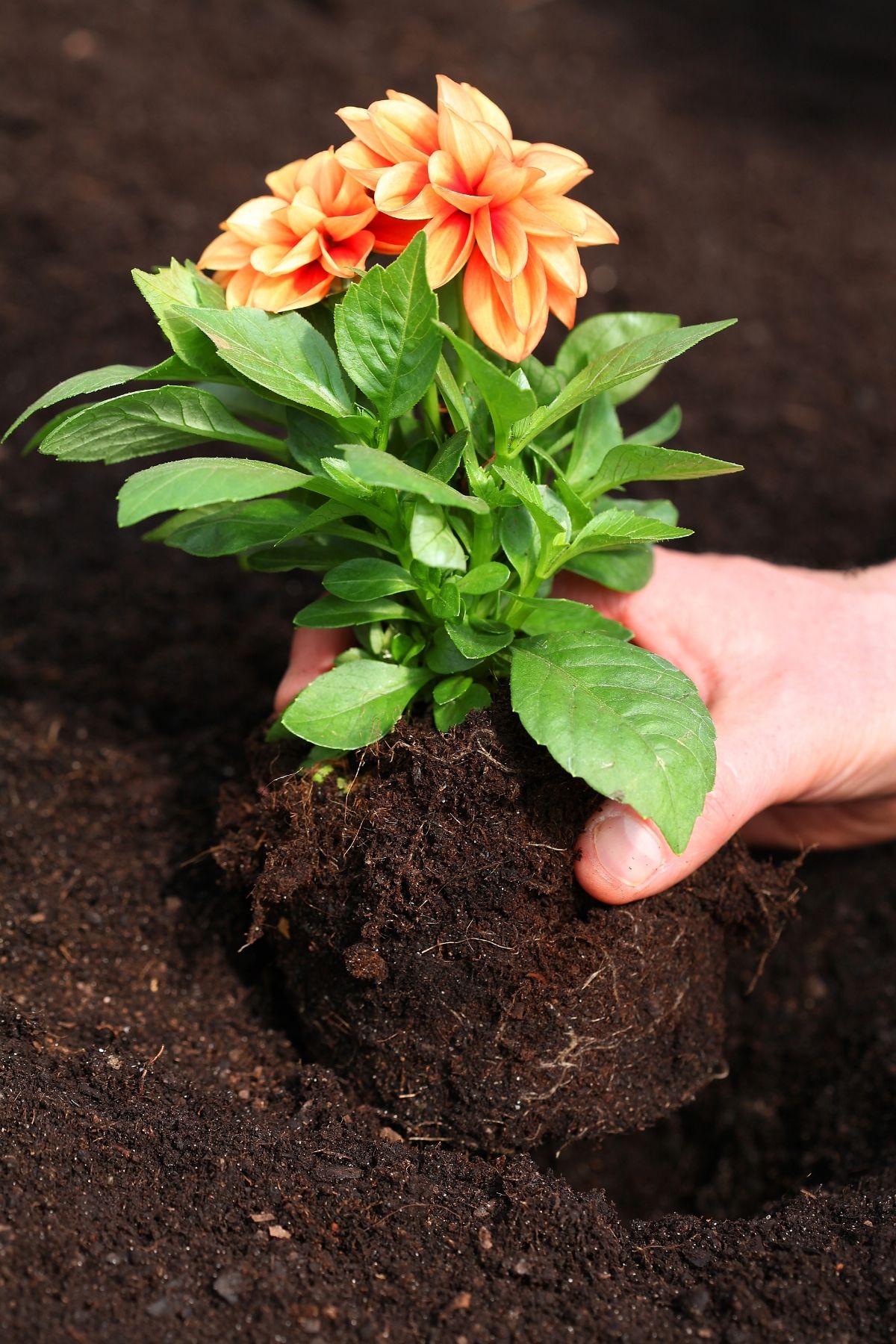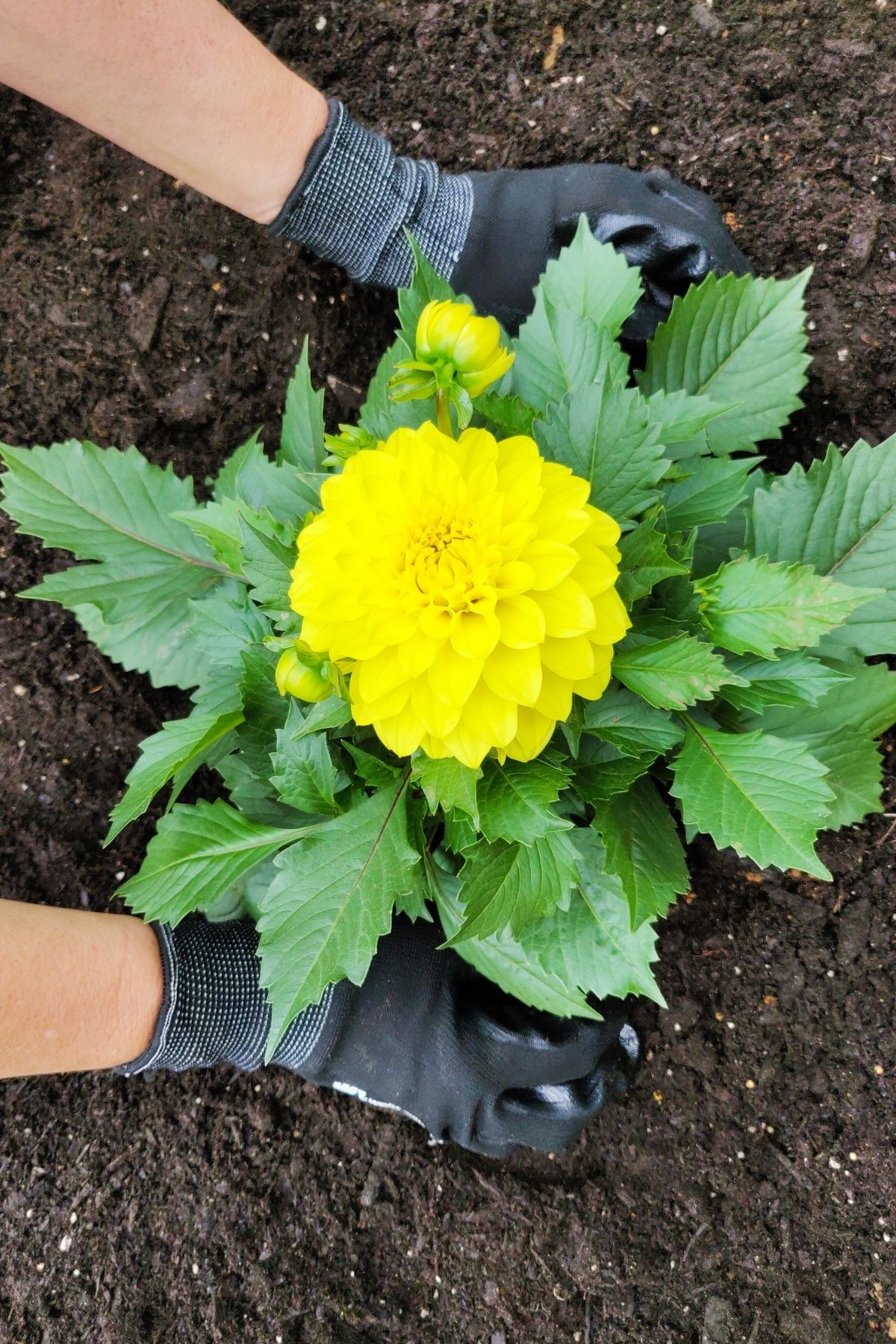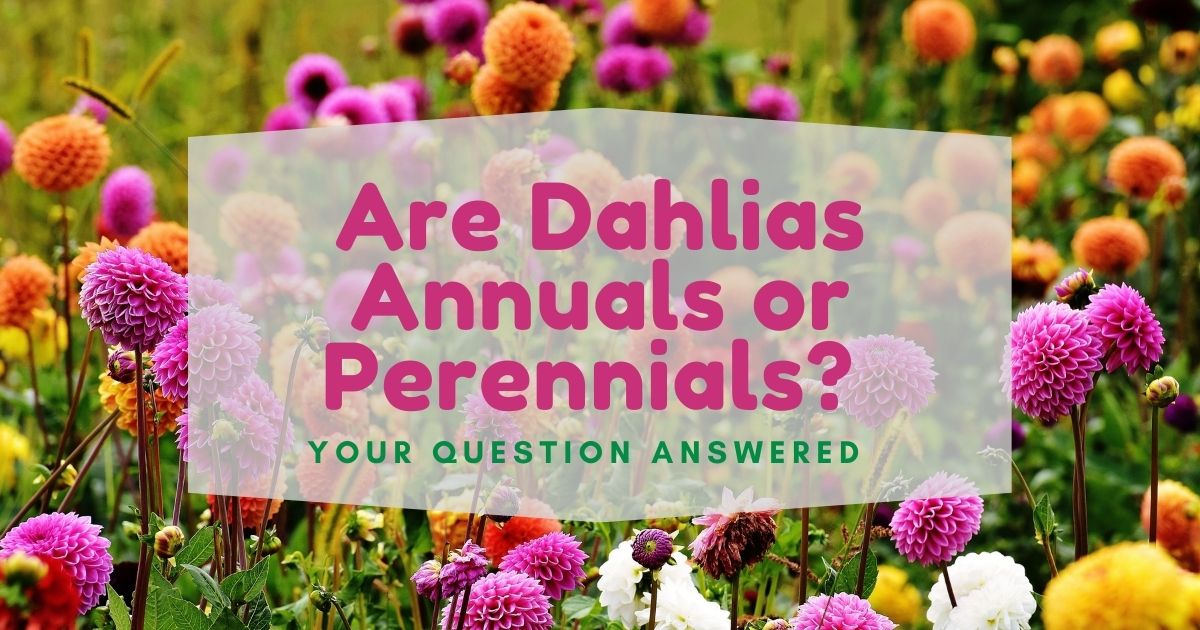When are Dahlias in Season?
You may be wondering, what are dahlias? Are dahlias annuals or perennials? Dahlias are beautiful plants that can be a great addition to any garden. Depending on your location, you can plant them at different times of the year. If you desire to get the best out of your dahlia plants, growing them at the right time is essential. Keep reading to find out when are dahlias in season!

When to Plant Dahlias
Dahlias are a beautiful addition to any garden with bright colors and large blooms. But before enjoying their beauty, you need to know when to plant them. Dahlias are tuberous perennials, meaning they will return each year if you take proper care of them.
However, they are often grown as annuals since they require much effort to overwinter. Therefore, it would be best to plant dahlias in the spring in most regions after the last frost date. They will then bloom throughout the summer and into the fall.
Once the first frost arrives, it’s time to dig up the tubers and store them indoors until the following spring. With a little bit of planning, you can enjoy dahlias in your garden for many years to come.
Are Dahlias Annuals or Perennials?
Many people ask themselves, are dahlias perennials or annuals? First, let us look at some terminology: An annual plant completes its life cycle in a single growing season. This means the plant develops, blossoms, seeds, and dies in the same year.
A perennial is a plant that grows year after year and lasts at least three years. Many perennials lose their above-ground foliage during the winter, but their roots remain active beneath the earth.
So, what exactly is a tender perennial? A tender perennial is a plant native to a climate where winter temperatures are mild. The plant grows as a perennial in warm climates. It cannot survive the winter in colder climates without proper care.
Dahlias are perennials, annuals, or tender perennials. Dahlias are native to Guatemala and Mexico, where temps are warm all year; therefore, the answer varies depending on where you’re growing them.
Temperatures rarely drop below 20 degrees Fahrenheit (-6.7 degrees Celsius) in USDA hardiness zone 10. As a result, dahlias are perennials in this area. They’ll return in the late spring.
With extra care, you can quickly grow dahlias as perennials in USDA hardiness zones 8 and 9. First, cut back foliage after the first frost. Then cover the root zone with several inches of mulch to protect the dahlia tubers.
Dahlia plants in USDA hardiness zone 7 may survive the winter if the dahlia tuber, or underground tuberous roots, is protected. Dahlia is a delicate perennial in these areas. To be safe, dig up the tuberous roots of your dahlias and store them for the winter.
Dahlias are annuals for gardeners in USDA zones 6 and lower. After the late summer bloom, you must pull out the tuberous roots and store them for the winter.
When do Dahlias Bloom?
Dahlias are a type of flower that blooms in the summer and fall. They come in many different colors, including white, pink, red, and purple. Dahlias typically bloom from July to September. However, the exact date when they will bloom depends on the variety of dahlia and the climate where they are grown.
Dahlias that grow in cooler temperatures will bloom earlier than those in warmer temperatures. You can start dahlia plants from seeds or tubers. Seeds are often cheaper and easier to find.
You can plant tubers directly in the ground or start them indoors before transplanting them outdoors. It would be best to plant dahlias in full sun and plenty of room to spread out. Dahlias thrive well in well-drained soil that is rich in organic matter. Once they start blooming, dahlias will continue to produce flowers until the season’s first frost.
Deadheading (removing spent blossoms) will encourage the plant to produce more flowers. After the season’s last frost, you should dig up dahlia plants and store them indoors over winter. This will help them to survive and bloom again.
When to Plant Dahlia Bulbs
Dahlias are a type of flower that is native to Mexico. They exist in different colors. Dahlias grow best in climates that are warm and sunny. They typically bloom in the summer months and can continue to bloom until the first frost.
After the last frost, it would be best to plant dahlia bulbs in the spring. It would help to grow them in well-drained soil rich in organic matter. It would be best if you spaced dahlias should about 12 inches (30.5 centimeters) apart.
Once you plant the dahlias plants, you need to water them regularly. It would be best to fertilize them every two weeks with a balanced fertilizer. Dahlias will begin to bloom about eight weeks after you plant them.

How to Plant Dahlias?
There are dahlias, and there are shrinking violets. Dahlias are showy flowers. Their blooms might be as large as dinner plates or as small as pompoms.
This daisy-family plant, native to the Andes of South America, is a tender perennial in most parts of the country but hardy outdoors in USDA zones 8 to 10. With a thick layer of protective mulch, they can survive winters in zone 7.
Horticulturists split Dahlias into ten divisions, with several subgroups and minute distinctions. Dahlia selection is much more complex than growing them since many variations exist. On the other hand, Dahlias have three categories: giant, medium, and small.
The giant dahlias range from 3 to 4 feet (0.9 to 1.2 meters) tall. They have double flowers of 10 to 12 inches (25.4 to 30.5 centimeters). These thrive at the back of perennial beds, with other giant perennials surrounding them.
They throw up a spectacular late-summer and early-fall spectacle, but they’ll need some help to weather summer winds and rain. Thick bamboo pegs or fanciful spiral supports are good options.
Medium dahlias, often known as border dahlias, are compact plants that grow one to two feet (0.3 to 0.6 meters) tall. Dahlias look beautiful in front of a perennial bed with late-blooming perennials like phlox and asters. All border dahlias can also be grown in containers. However, cactus-flowered dahlias, with their peculiar rolled petals, are a unique option.
Windowboxes are ideal for little dahlias. These 10- to 20-inch (25.4 to 50.8 centimeters) plants are compact and have a long blooming period. You can also use them in pots and planters or at the edge of a border.
You can start your dahlia tubers in one-gallon (3.8 liters) pots approximately two to four weeks before your last frost date if you reside in a cold location and want to start early. Place the pots under grow lights or in front of a sunny window once they sprout (a south-facing window is best). Then, transplant them gently into their garden spot when the threat of frost has passed.
Dig a six to 12 inch (15.2 to 30.5 centimeters) deep hole and modify the soil with compost to plant all but the minor dahlia varieties. If the soil isn’t draining well, add some fine gravel. Plant the tubers two to four inches (5.1 to 10.2 centimeters) deep and one to three feet (0.3 to 0.9 meters) apart, depending on the variety, then backfill the hole with native soil. In 14 to 20 days, growth begins.
Tall dahlias, such as dinnerplate dahlias, will require staking or support to prevent the heavy blooms from tumbling over. Ensure that the supports are in place before the plants become too large.
Pinch off the top growth of the dahlia shoots above the third set of leaves while the plants are still young to generate a bushier plant. Shorter varieties are bushier by nature and do not require pinching.
Apply a water-soluble organic fertilizer formulated for flowers to dahlias once a month. Using a high-nitrogen fertilizer, you’ll get a lot of green growth but not much flowering—mulch with straw or shredded bark to keep weeds at bay and conserve moisture.
To encourage additional branching and flower production, cut blooms for indoor flower arrangements and remove old blossoms. Dahlias are low-maintenance after establishing themselves.
Does a Dahlia Want Sun or Shade?
Dahlias are among the most popular flowers, and they come in a wide range of colors, shapes, and sizes. One of the questions most people have about dahlias is whether they prefer sun or shade. The best answer to this question depends on the type of dahlia. Some dahlias, such as the cactus dahlia, do their best in full sun.
Others, like the ball dahlia, can tolerate partial shade. Dahlias generally need at least six hours of sunlight per day to bloom well. However, if you live in an area with hot summers, you may want to give your dahlias some afternoon shade to prevent them from getting too much heat.
Whatever type of dahlia you choose, give it plenty of space to grow. Dahlias can spread quickly, so plant them at least 18 inches (45.7 centimeters) apart. Your dahlias will thrive and provide a colorful addition to your garden with care.
The Different Dahlia Color Varieties
Dahlias come in various colors, from classic white to deep burgundy. You can divide the different color varieties into two main groups: those with warm tones and those with cool tones. The warm-toned dahlias include shades of orange, yellow, and red. In contrast, the cool-toned dahlias have purple, blue, and pink dahlia flower shades.
The different varieties also have different blooming times. Some Dahlias start to bloom as early as June, and others do not bloom until September. A Dahlia variety will be perfect for your garden, with many different colors and blooming times.
Do Dahlias Come Back Every Year?
Every gardener knows that annual flowers are a beautiful addition to any garden. Still, they can be a bit of a hassle to deal with. You have to plant them every year, and after a few years, they start to look a bit tired.
So, do dahlias come back every year? The answer is yes. And no. Dahlias are tender perennials, meaning they will come back year after year if grown in the right conditions.
However, if you expose them to too much cold or heat, they will die off. This means that you will need to replant dahlias each year in most parts of the country. But if you live in an area with mild winters and summers, you may be able to get away with planting them once and letting them come back on their own.
Can Dahlias be Grown as Perennials?
Dahlias are among the popular flowers that grow in gardens, and with good reason. They grow in a wide range of colors and sizes, and they bloom from July until the first frost. Unfortunately, dahlias are not true perennials, which means they will not come back year after year on their own.
However, there are a few things that dahlia growers can do to encourage them to return the following season. One is to leave the tuberous roots in the ground over winter and mulch heavily. This helps insulate the roots and keeps them from freezing solid, killing the plant.
Another option is to dig up the dahlia tubers in fall and store them indoors over winter. Dahlias can be grown as long-lived perennials with a bit of care that will provide color for many seasons to come.

Dahlia Out!
So, there you have it! Now that you know everything about planting a dahlia get out there and give it a try. Dahlias are simple to grow and make a beautiful addition to any garden or landscape.
And if you’re feeling extra crafty, why not try painting your dahlias in different colors? There is no limit when it comes to these versatile flowers. Have fun with them, and happy planting!
